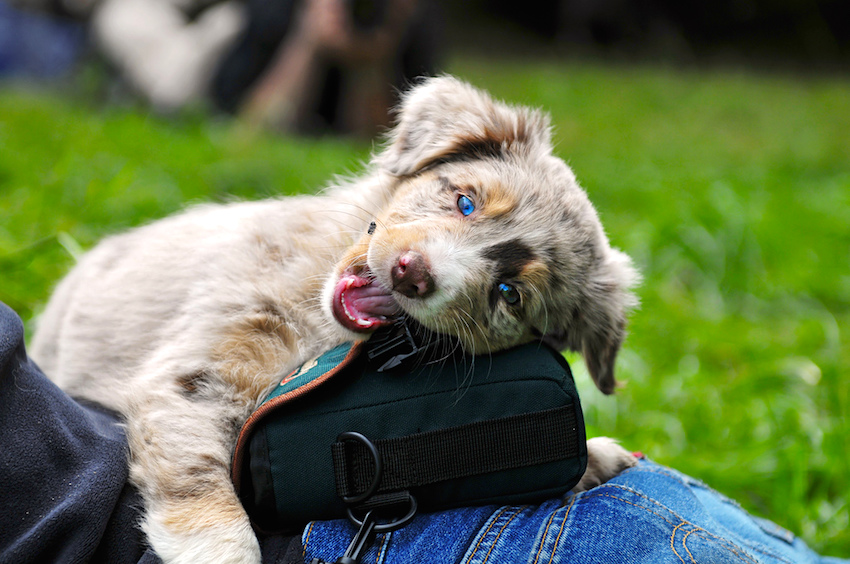Effective Family Dog Training: Tips to Help Your Dog Thrive in a Family Environment
Discover family dog training techniques that help build obedience and trust, ensuring your dog thrives in a loving family setting. Learn more today!


Don’t leave your pet’s safety to chance
Sign up for Petful recall alerts today.

Understanding Behavior Problems in Family Dogs
Living with a dog who has behavior problems can be challenging for any family. Not only are boundaries tested, but a dog’s behavior can disrupt even the most stable household.
Collaborating as a Family for Effective Training
Dog training success often relies on the collaboration of everyone in the household. If you’re facing issues with your dog, start by evaluating the family dynamics. Here’s how:
- Set clear, consistent rules for the family dog.
- Ensure that all family members understand their role in the training process.
- Create a routine that involves everyone in the household.
Dr. Erin Kuntze, a clinical psychologist from Los Angeles, explains, “Setting aside an hour to meet as a family will make the role of each family member significantly clearer and make a smoother, more successful transition into helping the family dog become a welcome member of the household.”
The Importance of Consistency in Training
“Like children, dogs thrive in a household where the rules are communicated clearly and consistently,” says Dr. Kuntze. “If each family member has a different set of rules, the family dog’s behavior will reflect this inconsistency.”
For more expert advice on dog behavior, visit Dr. Erin Kuntze’s clinical psychology website Dr. Erin Kuntze’s clinical psychology website.
4 Tips for Family Dog Training Success
Training a family dog can be more effective when everyone is on the same page. Here are four essential tips to ensure family dog training success:
Be Consistent
Hold a family meeting to ensure everyone agrees on the training rules. It’s important to avoid conflicting messages such as:
- Some family members allowing the dog on the couch or bed while others do not.
- Mixed signals about when the dog can beg for food or jump on visitors.
By discussing everyone’s ideas, you prevent confusion for your dog, allowing for clearer and more consistent training.
Include Everyone
For family dog training success, ensure that all family members participate in the process. Common challenges include:
- Someone feeding the dog from the table, encouraging begging behavior.
- Differences in how family members approach training commands or behaviors.
Tip: Turn mealtime into a training session by teaching the dog to stay on his bed during dinner. This keeps everyone involved while reinforcing positive behavior.

Be Positive
Assign specific “action steps” to each family member rather than focusing on what they shouldn’t do. Examples include:
- Do not say: “Don’t chase the puppy when he grabs a sock.”
- Do say: “If he grabs a sock, offer him a desirable chew toy to encourage him to return the sock undamaged.”
Positive reinforcement keeps the training process encouraging and successful.
Reach Agreement
Family dynamics can complicate reaching an agreement, especially since caring for a dog is often a personal and emotional experience. To avoid conflicts:
- Allow everyone to voice their opinion on the dog’s care.
- Be open to compromise on rules, such as where the dog is allowed in the house.
For example, when I was younger, my parents wouldn’t allow dogs inside, which led to tension. I would sneak the dogs in and hide any damage. To prevent such issues, include everyone in the decision-making process.
This video shows a girl named Elsie working on commands with her dog, Harlem, with her mom’s instructions:
Consider a Counseling Session for Family Dog Training Success
Sometimes, a family counseling session can open the lines of communication and significantly improve the family dog training process.
At “I Said Sit!” School for Dogs in West Los Angeles, we have seen real benefits by including family counseling in our training program. In fact, Dr. Erin Kuntze, a clinical psychologist, acts as our “school counselor” to help with more complex family cases.
How Counseling Improves Training
In one case, Dr. Kuntze helped parents recognize the need to support their children better. The children had been seeking comfort from the family dog, and Dr. Kuntze showed the parents how to:
- Console the children during tough times.
- Encourage the kids to positively contribute to the dog’s training program.
After making these changes, the family saw much more success with their dog’s behavior.
The Benefits of Family Counseling for Dog Training
Dr. Kuntze emphasizes the value of family counseling in helping dogs successfully integrate into households. She says, “In the most successful cases, I’ve done at least one counseling session with the entire family to identify the needs, motivations, and skill sets of each member. This leads to smoother transitions for pets into the family, and the sessions are often enjoyable for everyone.”
Key Benefits of Counseling Sessions
Family counseling can provide:
- Clear communication between family members about the dog’s role in the home.
- Better understanding of each person’s responsibilities in the training process.
- Support for family members, including children, who may feel overwhelmed by the dog’s training.
When to Consider Family Counseling
If your dog has become the focal point of family disagreements or stress, it might be time to consider family counseling as part of your behavioral treatment plan. Here’s when to think about counseling:
- When different family members have conflicting approaches to dog training.
- When the dog is causing tension or frustration in the household.
Consulting a Professional for Your Dog’s Behavior
In the same way you would consult a positive dog training professional, consider professional counseling to improve family communication and support the success of family dog training.
For additional guidance on family dynamics and dog training, visit The Association of Professional Dog Trainers Association of Professional Dog Trainers, which offers valuable resources for families and dog owners.
Frequently Asked Questions (FAQ)
How do you train a dog with a family?
You train a dog with a family by ensuring consistency in commands, involving all family members, and maintaining a structured routine.
What is the easiest family dog to train?
The Labrador Retriever is often considered the easiest family dog to train due to its intelligence and eagerness to please.
How to train a dog with anxiety?
To train a dog with anxiety, use positive reinforcement, gradual desensitization, and provide a calm environment to build confidence.
What is the most trainable family dog?
The Border Collie is widely regarded as the most trainable family dog, known for its intelligence and ability to learn complex tasks.








